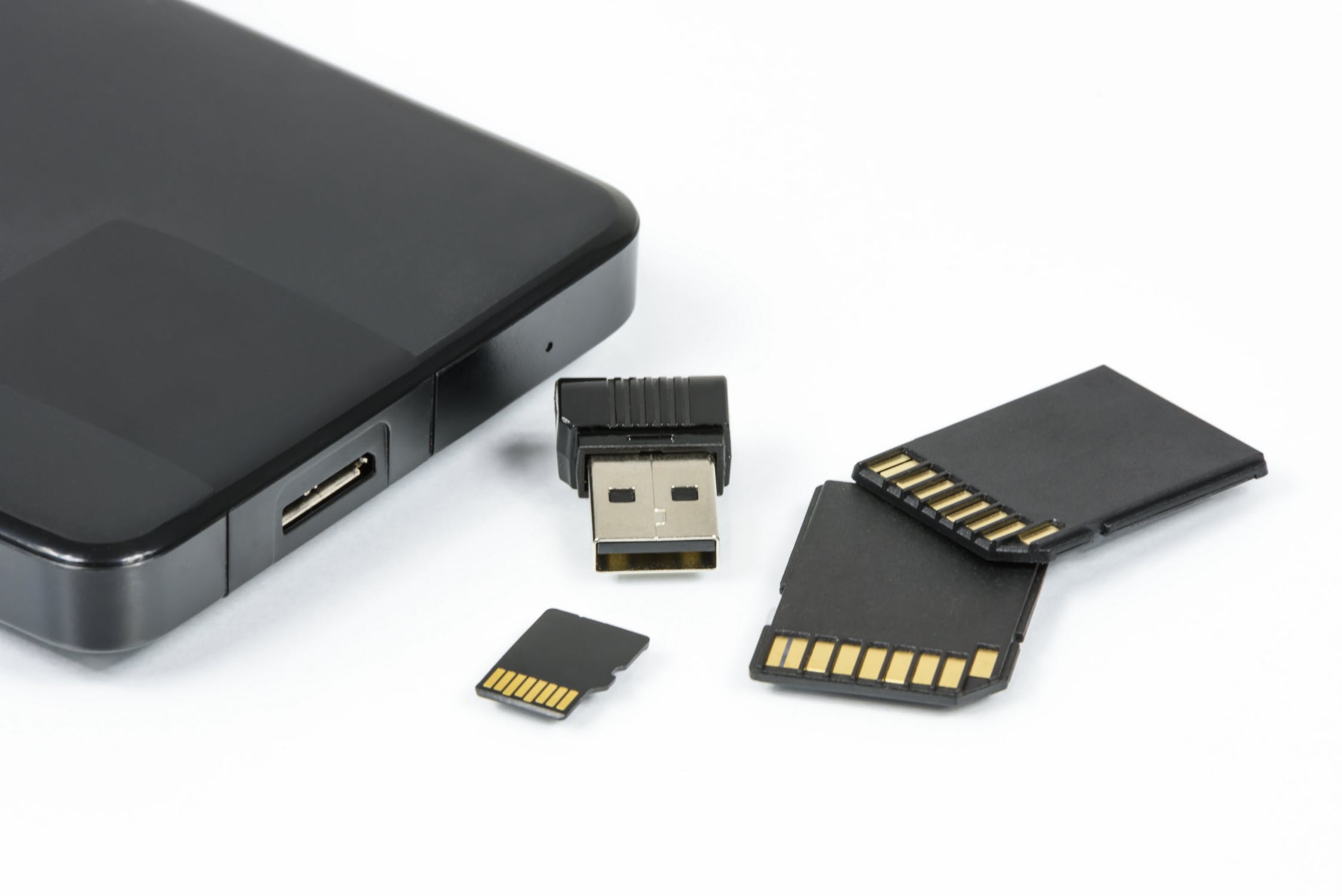How Do You Know When An SD Card Is Failing?

For more than a decade, Secure Digital (SD) cards have served as a memory expansion for digital cameras, camcorders, and smartphones. SD cards (also commonly abbreviated as SDSC, SDHC, SDHC, SDIO, microSD, etc.), are based on a reliable technology, but since some cards are now ten years old or even older, it is possible for your SD devices to fail.
No form of memory card lasts forever. There comes a point when every SD card will fail and stop working – but how will you know when that happens?
The first thing to examine is whether it’s a failure of the card or the interface between the card and the device.
SD cards usually mount in one of three ways.
- The card slides into its slot without any spring mechanism to hold it in (many PC multi-card readers operate this way).
- The card slides in with the assistance of a spring mechanism to hold it in place, as in push-and-click-in/push-and-click-out, to hold it in place (digital cameras/camcorders use this a lot).
- The card is laid down and then “sealed” into place with a metal flap manually moved into place (used mostly in smartphones).
If method 1 is used, SD card failure is almost never the device’s fault because there’s hardly any pressure applied; it’s not like there’s any point where you’re jamming the card in there because it only requires minimal effort to take in and out.
If method 2 is used, yes the device itself could be at fault here. Click-in/click-out methods of mounting cards do put significantly more pressure put on the card and contacts; that’s just the nature of the way they work.
If method 3 is used, it’s unlikely the device is at fault because at no time are you putting significant pressure on the card, with the exception of the “flap-and-click” where you lay the card down, pull over the flap, then pull the flap with your finger and click the contacts into place. But even then, that’s really not that much pressure.
Read and write failures
One day you go to turn on the device that uses the SD card, write some data to it (such as taking a photo with your digital camera), you go to check the data and it’s corrupted or simply isn’t there – but you know you wrote data to it. This is highly indicative that the card is nearing the end of its lifespan and should be replaced.
System initialization failures
Using a digital camera as an example, you power up the camera and the screen says no card exists even though there’s one in there. You power the camera off, then on again, the card is then recognized and you go about your business. This camera is telling you (albeit indirectly) that the card is exhibiting problems, and you should replace it.
If on camera startup the screen always reports that there’s no card in there, it’s most likely true the card has failed completely and you should replace it.
Bad contacts
Contact points can go bad on both ends, both on the card itself and the device just from using them so much that they wear out; the click-in/click-out method of mounting an SD card is the most susceptible to this because you’re probably inserting and removing the card often.
Although this may sound very non-technical, it is true that blowing on the device’s contacts can sometimes save the device, and this is pretty much all you can do because it’s not like you can get in there with a cotton swab to clean it out.
How to avoid contact failure?
The easiest thing to do is to simply not move the card. An alternative method for getting data off an SD card is to use a USB cable instead. With a digital camera for example, you can plug that into your PC via USB cable to get data and photos off the SD card without ever physically removing it from the device.
I especially recommend using the USB cable method for those of you out there with older devices that use SD, as it will extend the life of the device significantly.
How come devices that use SD storage won’t give me “friendly” errors to tell me what’s going on?
They were never designed to, and for the most part still aren’t.
In the early days of devices that used SD, when a card failure occurred, the device would report “system failure”, which obviously tells you nothing other that there’s an error somewhere, but where? It won’t tell you. But it’s almost always a memory card fault.
Later on as devices advanced, the better ones will report an on-screen error such as, “CARD READ FAILURE”, or show an on-screen red icon with a picture of a card with a slash through it, telling you up front the card is the problem so you know it needs to be replaced.
You have to remember that the tiny computers that are in things like digital cameras aren’t exactly the most user-friendly things at times, so when an error pops up, sometimes you have to figure out for yourself what the error means.
More often than not however, should an error appear and you’ve ruled out everything else that could present a problem, it’s probably the SD card that’s causing the error in the first place. And if on replacement of the card the error doesn’t go away, try as best you can to clean the contacts on the device by blowing on them yourself or with a can of compressed air using very short bursts.
Need a new SD card for a good price?
There’s a whole bunch of them here. Remember, SD cards are cheap and readily available, so if yours is old, replace it.















